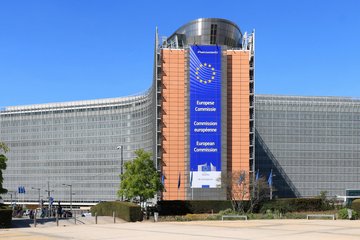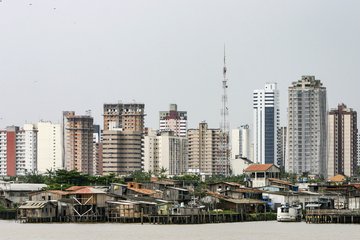
How Should Economies Grow? The Politics of Growth Strategies at Times of Crisis
Arianna Tassinari
Economic growth is fundamental to the stability and legitimacy of capitalist economies as we know them. The implicit consensus that exists between influential political and economic elites on what are desirable economic policies means that growth strategies are not generally the subject of political contestation or competition: in normal times, the politics of growth models tends to go unnoticed. Yet dramatic events and economic crises can upset the equilibrium of the consensus and provoke open political and party-political conflict, with potentially dramatic changes of trajectory as a result.
Economic growth is a central and common concern in public opinion across all capitalist economies. When the economy goes bad, the public worries, trust in government declines, and elected politicians run a serious risk of getting punished at the polls. At the same time, many public policy decisions are often justified on the grounds that they are good for economic growth in the long run – notwithstanding their often detrimental environmental or social implications. In capitalist economies, in short, growth occupies a central place both as a policy goal, a discursive device to legitimize policy choices, and as the “glue” that holds society together by making capitalism “work.” While the sustainability of existing models of capitalist accumulation is increasingly coming under close scrutiny as the climate crisis unfolds, the “growth paradigm” which underpins advanced capitalism remains, to date, largely hegemonic.
How growth is generated is, however, a much blurrier and more complicated affair. Who gets to decide which policy strategies a country concretely pursues to generate economic growth? To what extent do we, as citizens and voters, ever stop to think about the “models of growth” that characterize the countries we live in? Do we have clear preferences about the key policies that underpin the pursuit of growth in our economies? Or are these matters outside the purview of democratic politics? These questions about the politics of growth models are central to the research agenda that MPIfG director Lucio Baccaro’s Political Economy Research Area has been working on since 2018.
Growth models as structural features of economies
The growth models perspective in political economy (Baccaro, Blyth, and Pontusson 2022) starts from the empirical observation that capitalist economies differ from one another on how they generate economic growth – specifically, depending on the main sources of aggregate demand. Different types of growth models are empirically identified on the basis of where the impulse for growth comes from. Of the main alternatives, wage-led growth, where wage growth in line with productivity fuels household consumption and investments, is the model that characterized most Western European economies until the 1970s but has since been in decline. Export-led growth, where foreign demand and the export sector are the main engines of the economy, is typically exemplified by the German economy. Credit-led growth, where domestic demand is supported not by wages but by the availability of credit to households, was the model characterizing the UK as well as Spain up until the Global Financial Crisis of 2008-09. It is also possible that a country has no singular sustainable growth drivers and enters into protracted stagnation. Italy is an example of such a scenario.
»Different capitalist economies have different economic growth strategies.«
Growth models are, to some extent, “structural” features of an economy that are not directly the object of political choices, at least in the short term. They tend to change gradually, and many factors contribute to shaping their attributes. However, they are not natural entities either. As well as being rooted in structural features of the economy, they are underpinned by policy choices that create the necessary framework conditions for growth to be sustained and that facilitate and benefit firms and workers in certain sectors of the economy more than others. The literature on growth models calls these policies “growth strategies.” Over time, applying different growth strategies might change the attributes of a growth model. The strategies include, among others, monetary and fiscal policy, structural and distributional policies, social policies, and policies governing wages and labor markets. For example, the success of the German growth model rested for a long time on policy choices and institutions that supported wage moderation, which in turn favored the competitiveness of exports, and on a fixed exchange rate regime guaranteed by euro area membership.
Functional growth models depend on cross-class coalitions
Normally, we tend to think of policy choices as the object of political conflict, contestation, and confrontation – the key issues over which political parties compete with one another. Likewise, we could expect growth strategies to also be subject to political and electoral competition. At the end of the day, how – and not only how much – a country grows has massive substantive and distributional implications. And yet, research highlights that this is not necessarily always the case. Most of the time, how growth is produced is not problematized in public debate and does not become a topic of political contestation. Scholars have observed that core policy choices relevant to the viability of functional and established growth models only rarely become the object of direct electoral competition between political parties. Rather, political parties tend to converge in their positions on the core policy fundamentals that underpin the viability of the growth model; and they compete mostly on other issue areas that are less central to the growth models’ functioning. For example, in Germany, membership in the euro has never been the object of open political contestation, and no political party would advocate for policies that explicitly undermine the competitiveness of German manufacturing exports. Why might this be the case?
»In normal times, growth models are not the subject of electoral and political competition.«
One hypothesis, articulated for instance in Baccaro, Blyth, and Pontusson (2022), is that functional growth models hinge on the presence of a cross-class coalition, i.e., a coalition that cuts across the labor-capital divide, which comprises those segments of society that are the de facto “winners” of a growth model. These actors form the core base of support for the policy choices that underpin the reproduction of the growth model over time. Such a coalition may include more or less organized interests from key sectors of the economy – corporate elites, firms, and organized employers, but also their employees, who reap the benefits of the sector’s success, as well as government officials who want to ensure the smooth running of the economy.
The assumption, therefore, is that in normal times, mainstream political parties seek to manage the stability of the existing growth model by keeping the key, core macroeconomic policy choices outside of the sphere of electoral competition and political contestation. In parallel, they seek to assemble as large coalitions of voters as possible – for example, by putting in place “compensatory” policies to distribute concessions to those segments of society that do not directly win from the functioning of the growth model. Germany’s decision to introduce a minimum wage in 2015 could be interpreted as such an attempt to “stabilize” the political viability of the German export-led regime, by giving material concessions (i.e., higher wages) to those segments of the workforce in the non-traded service sectors that had suffered from sustained wage moderation since the mid-1990s and had not directly benefited from the success of the export sector.
However, it is not always the case that growth strategies remain outside the sphere of political competition and contestation. In the aftermath of acute economic crises, for example, the noise, tumult, and messiness of open political conflict may be able to break into the otherwise calm and sheltered sea of the “quiet” politics of growth models. Crises might shake up the equilibrium of even well-established cross-class coalitions and act as transformative critical junctures, in which the trajectory of growth strategies might change even dramatically. How so?
There are different mechanisms by which this can happen. Change can be unleashed from within, for example. Crises can make evident to the public the problems, contradictions, and malfunctions inherent in a specific model of growth. As the group of actors that benefit from a given growth model shrinks dramatically in times of crisis, the ranks of losers swell. This can create demand among discontented voters for a different economic policy paradigm – one that challenger parties might embrace and that might, over time, even transform the pre-existing policy paradigms among mainstream political parties. Previously powerful sectoral actors might lose terrain in favor of new, emerging sectors, thus upsetting the balance of power within pre-existing cross-class coalitions.
Change can also be induced by exogenous forces, outside the domestic political sphere. The policy decisions that countries are “forced” to take as a result of the intervention of external actors – for example in exchange for external financial assistance or due to the requirements of European integration – might undermine the sustainability of a pre-existing growth model.
A clear example of the interplay between these two channels of growth model change is the Spanish economy after the Global Financial Crisis of 2008-09. The financial crisis led to the bursting of the housing construction bubble, which had been fueled by the rapid growth of credit and mortgage finance that had sustained the performance of the Spanish economy for the previous decade. The collapse of the construction sector unleashed a deep reconfiguration of the sectoral balance in the Spanish economy, leading to skyrocketing unemployment and ballooning public debt. EU authorities pressured Spanish policy-makers to implement deep and painful policy reforms, such as unprecedented labor market liberalization, to support the re-orientation of the economy toward exports. The goal was to dramatically decrease wages and therefore improve the external competitiveness of Spanish exports (Bulfone and Tassinari 2021). This forced re-orientation toward exports has in part fueled the Spanish recovery since 2015, but the quality of employment created has been poor, and low wages are rife.
This transformation continues to be characterized by ongoing political instability. The discontent of the losers of the crisis over declining living standards, unemployment, austerity, and labor market insecurity transformed the Spanish party system. New challenger parties, such as the radical left Podemos, grew substantially. Podemos eventually ascended to government in 2019 in coalition with the center-left Socialist Party (PS). In government, Podemos is voicing the demands of unions and the losers of the Spanish economy – and their growing dissatisfaction with the model of low wages and precarious work that has underpinned the recovery and the forced structural adjustment toward exports. As a result, the PS-Podemos government has been implementing policies aimed explicitly at increasing wages, including massive increases in the minimum wage and a labor market reform aimed at reinforcing sectoral collective bargaining and promoting permanent over temporary contracts. These policies fundamentally call into question key elements of the export-led growth strategies pursued by previous governments, with the goal of supporting domestic demand and household purchasing power by increasing wages. As a result, it is hard to detect a “stable” growth coalition underpinning the Spanish economy today. Rather, there is open political contestation over some of the economic fundamentals driving the trajectory of the recovery.
In sum, what does this tell us about the politics of growth models? While economic growth is an important outcome for the stability and legitimacy of capitalist economies, the politics of growth models tends, in normal times, to be quiet. Key political and economic elites share an implicit consensus on desirable economic policies, and decisions about growth strategies usually remain outside of the sphere of political competition. However, as the Spanish example shows, dramatic events and crisis conjunctures can upset these equilibria and occasionally bring growth strategies into the terrain of political and partisan contestation. Given that we live in a phase characterized by continuous and accumulated crises that are upending the stability of the world economy – think of Covid-19, climate change, the challenge of the energy transition, and now the Russia-Ukraine war with its massive geopolitical implications – it is possible that the future politics of growth models will be characterized by much more instability and contestation than has been the case in the past. It is not known how the consequences of these multiple, overlapping crises will play out and what their implications will be for the future of our economies and of capitalism as we know it. But we can be sure that interrogating the politics of growth models will remain a highly relevant endeavor to make sense of the trajectories of transformation of capitalism in decades to come.









